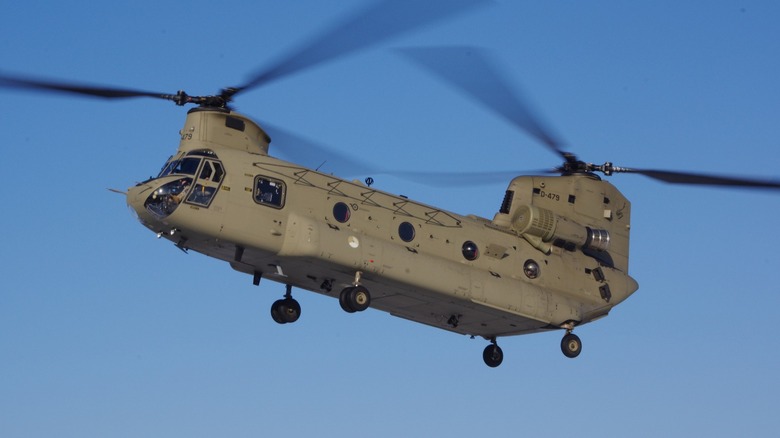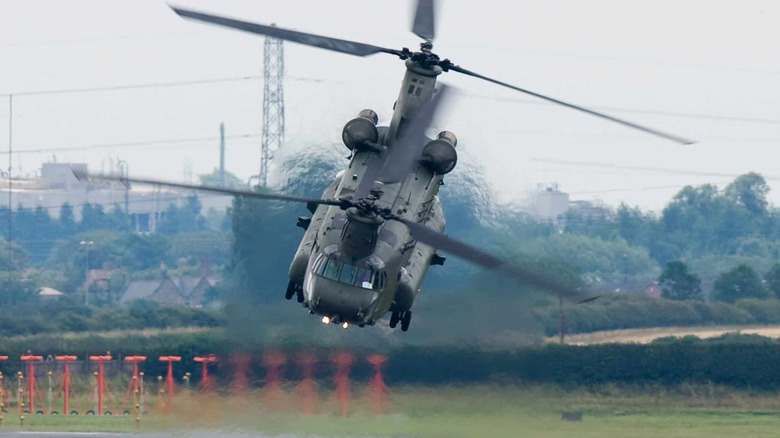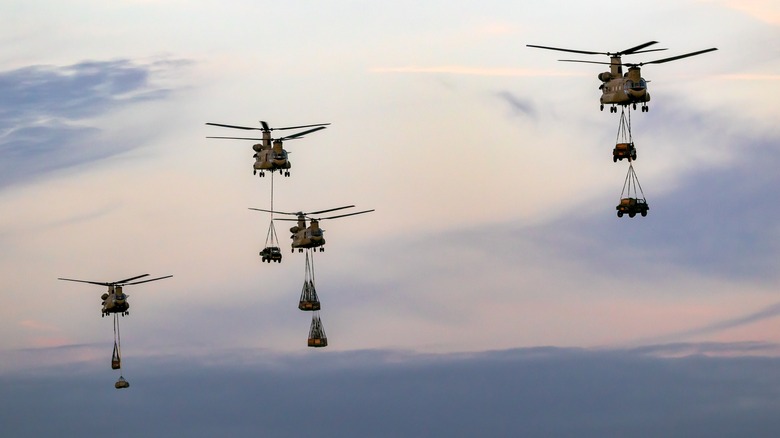CH-47 Vs. MH-47 Chinook: What Is The Difference Between These Two Military Helicopters?
The Chinook is one of the most iconic military helicopters in history. The CH-47 and MH-47 Chinooks might look like twins thanks to their shared frame, but they lead completely different lives. The CH-47 Chinook first hit the skies in 1961 as a heavy-lift helicopter built by Boeing Vertol for the U.S. Army. Originally designed to haul troops and artillery in Vietnam, the CH-47 series evolved steadily over the years, culminating in the current CH-47F, the latest model equipped with digital avionics and a reinforced airframe. It's one of the few helicopters to remain in frontline service for more than six decades.
The MH-47 was developed to meet the U.S. Army's requirement for a heavy-lift helicopter capable of supporting special operations in challenging environments. In the mid-1980s, the 160th Special Operations Aviation Regiment (SOAR), known as the "Night Stalkers," began operating the MH-47D, an early model built around the CH-47D airframe. This was followed by the MH-47E, introduced in 1993, which featured more powerful engines, enhanced fuel capacity, and advanced defensive avionics. The current variant, the MH-47G, includes further upgrades such as a digital cockpit and improved survivability equipment. Now, it's time to look under the hood and see how these two helicopters stack up in tactical capabilities.
How the latest variants of the CH-47 and the MH-47 differ
We'll be comparing the latest variants of both Chinooks for the sake of simplicity — the CH-47F Block II and the MH-47G Block II. The CH-47F Block II is built for heavy-lift logistics, with an upgraded airframe, advanced composite rotor blades, and a reinforced drivetrain that allows it to carry up to 27,700 pounds. It features the Common Avionics Architecture System (CAAS) and an improved fuel system to increase range and operational efficiency in conventional military missions.
The MH-47G Block II is similar but gets some additional gear required for special operations. It shares the same core airframe, but it also integrates capabilities such as terrain-following radar, in-flight refueling, FLIR sensors, and a suite of electronic warfare systems. It also includes specialized mission gear such as fast-rope systems and enhanced survivability features, making it ideal for covert infiltration, exfiltration, and other high-risk operations. Ultimately, both variants show off the remarkable flexibility of the Chinook platform and how it can be adapted for wildly different missions.
What they are doing in 2025
Today, the CH-47 is still doing what it does best: moving heavy stuff in hard places. It's flown resupply missions in war zones, delivered humanitarian aid after disasters, and even carried vehicles. For instance, in August 2023, two CH-47 Chinooks from the Hawaii Army National Guard were deployed to combat the devastating wildfires on Maui. These helicopters performed 58 bucket drops, releasing more than 100,000 gallons of water to suppress the fires over a five-hour period. It's not just an American tool, either, as countries such as Canada, Australia, and the Netherlands still actively buy and fly Chinooks, often with their own localized tweaks.
The MH-47, meanwhile, operates under different rules. It continues to be the go-to aircraft for elite missions handled by the Night Stalkers for deep insertions, hostage rescues, and high-risk extractions where failure isn't an option. While specific details of recent combat missions are scarce due to operational security, it continues to demonstrate special operations aviation capabilities even today. For instance, in September 2024, two MH-47G Chinooks from the 160th Special Operations Aviation Regiment deployed to the United Kingdom for joint training exercises with British forces.


